1. Dolceacqua
A picture-postcard village in the province of Imperia, not far from Ventimiglia and the French border, Dolceacqua lies not far from the sea and occupies a hill near the Nervia stream: the humpback bridge that crosses it is, along with the Doria Castle, the village’s symbol. The carruggi, or narrow alleys (which, as is often the case in Liguria, sometimes run between houses or under houses in passages where not even daylight reaches: in Dolceacqua it happens in the so-called “Scasassse,” a kind of tunnel between buildings, inside which commercial activities arise), cling to the top of the hill on which the Castle stands (which can be visited). Not to be missed is the 15th-century parish church of Sant’Antonio, which houses the Santa Devota Altarpiece by Ludovico Brea, one of the greatest artists of the Ligurian Renaissance. Dolceacqua is also famous for the production of Rossese, one of Liguria’s doc wines, and for being “immortalized” in the paintings of Claude Monet during his stay in the region.
 |
| View of Dolceacqua. Ph. Credit Finestre Sull’Arte |
2. Varese Ligure
The municipal territory of Varese Ligure (the name “Varese” derives from the fact that the Vara River flows near here) is the largest in the province of La Spezia, but the picturesque village (with its characteristic elliptical fform) is small in size: it has medieval origins and was one of the fiefdoms of the Fieschi family, one of the most powerful families of the ancient Republic of Genoa. Their presence is recalled by the mighty castle, called the Castello dei Fieschi, which encloses the village on one of its sides: it is notable for its large 15th-century towers (today it is a venue for events). The parish church of San Giovanni Battista contains masterpieces by great Ligurian artists, especially of the 17th and 18th centuries, starting with Gregorio De Ferrari and Anton Maria Maragliano. Also worth seeing are the churches of Santa Sabina, Santi Antonio e Rocco, and San Filippo Neri (in the latter it is possible to admire a San Francesco Saverio by Gregorio De Ferrari.
 |
| View of Varese Ligure from above |
3. Castelnuovo Magra
The village of Castelnuovo Magra, among the main towns of the Magra valley, is situated on a hill of olive trees that offers spectacular views of the Luni plain and the sea. Developed in medieval times, the village was one of the main centers of the Count-Bishops of Luni, and in its castle, on October 6, 1306, the Peace of Castelnuovo was signed between the Count-Bishops and their rivals the Malaspina: the event has gone down in history mainly because Dante Alighieri was the procurator of Marquis Franceschino Malaspina. The Castle of the Bishops of Luni today is crumbling, but part of the walls and especially the tower, which has remained intact and has recently been secured and restored, survive: the building now hosts events and is an important photographic center. In the village, the parish church of St. Mary Magdalene houses a Crucifixion attributed to Pieter Brueghel the Younger. Also worth seeing are the Oratory of the Blessed Sacrament and the Oratory of the Assumption. Vermentino from the Colli di Luni is the typical wine of the area.
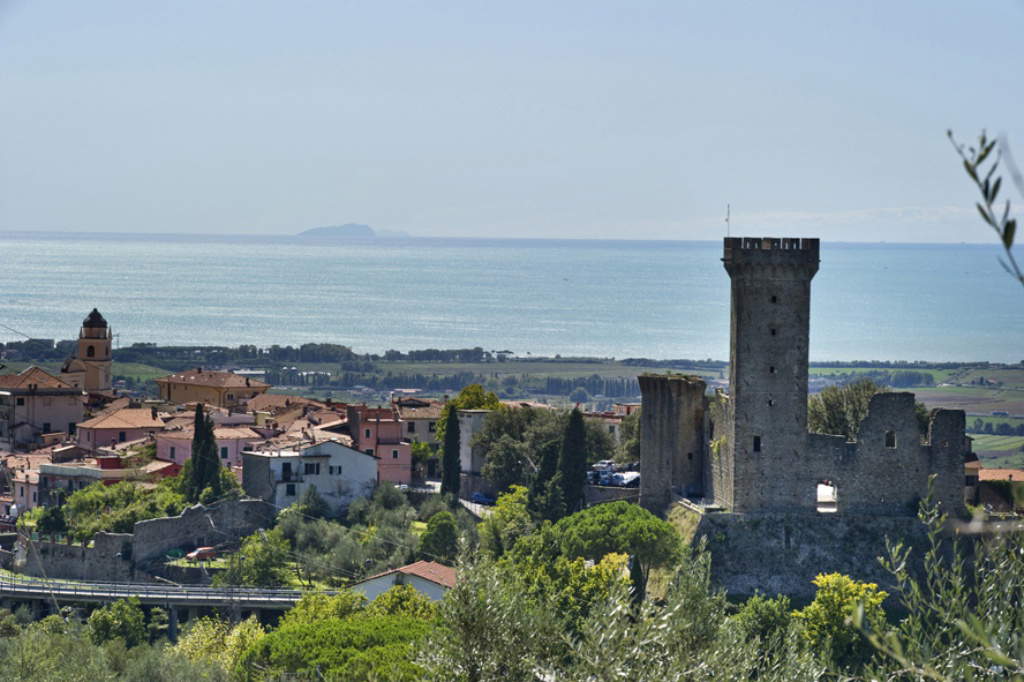 |
| View of Castelnuovo Magra |
4. Zoagli
It lies in the center of the Gulf of Tigullio and is best known as a relaxing seaside resort (the image of the beach immediately below the railway viaduct is quite famous), but Zoagli is also a village rich in history, an ancient fief of the Fieschi family. Also worth seeing are the two Saracen towers, from the 16th century, so important and recognizable that they are even included in the municipal coat of arms. Another symbol of Zoagli is the bizarre Sem Benelli Castle, built in the early twentieth century by the Tuscan writer and librettist in an eclectic style, while older is the parish church of San Martino, inside of which are wood carvings attributed to Anton Maria Maragliano and a marble altar by Francesco Schiaffino. Also in the church are preserved what tradition says are the ashes of St. John the Baptist, allegedly given to a condottiere from Zoagli, Giovanni Merello, by Genoese consuls returning from the First Crusade.
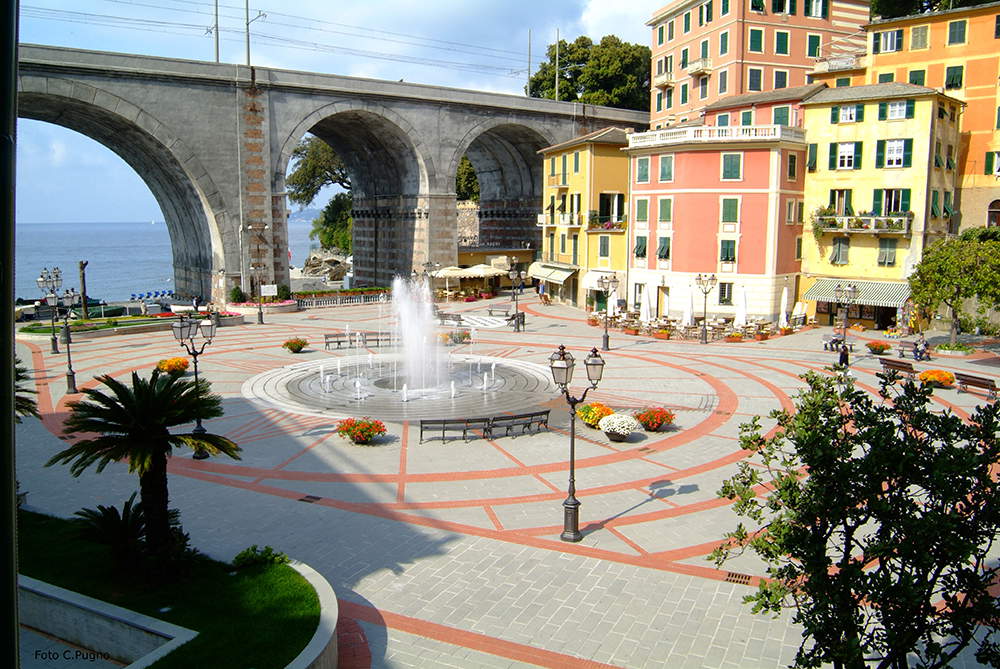 |
| View of Zoagli |
5. Noli
This village of two thousand six hundred inhabitants was, for a good six centuries (from 1192 to 1797) the capital of a small republic, the Republic of Noli, whose fate was tied to that of Genoa, but which nevertheless managed to maintain its independence for a long time. The administrative center of ancient Noli was the Palazzo del Comune, built in the 14th century but extensively remodeled in the late 18th century, and from the same period is the Loggia della Repubblica Nolese, which hosted meetings: on its walls are plaques commemorating illustrious people who passed through Noli (among them, Dante Alighieri, Christopher Columbus, Giordano Bruno). Many medieval buildings survive in the historic center of the village, and there are also numerous churches: the oldest, just outside the center, is that of San Paragorio, one of the most important Romanesque architectures in Liguria. Also worth seeing is the co-cathedral of San Pietro, also known as “San Pietro dei Pescatori” (fishing has long been one of Noli’s main sources of livelihood): inside is a polyptych attributed to Vincenzo Foppa.
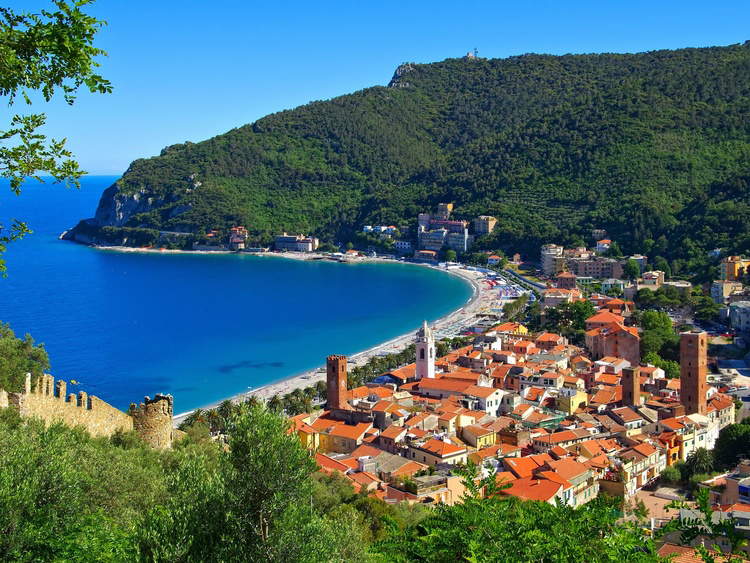 |
| View of Noli |
6. Albissola Marina
The name of Albissola Marina is known throughout the world for ceramics: in fact, it is one of the major Italian centers of ceramics and some of the greatest artists passed through here in the 20th century (from Lucio Fontana to Aligi Sassu, from Wilfredo Lam to Giuseppe Capogrossi, all the way to Asger Jorn, the great Danish artist who resided here for a long time: today in the hills it is possible to visit the Asger Jorn Museum, set up in what was once his home). In the village, which overlooks the sea (see the Passeggiata degli Artisti, a promenade decorated with mosaics created by great artists, including all those mentioned above) and which still retains some of its medieval appearance, a visit to at least one of the many pottery kilns still active is a must. Also worth seeing in Albissola Marina are the church of Nostra Signora della Concordia (inside, statues by Maragliano and a unique majolica altarpiece), the MuDA - Museum of Ceramics, and the sumptuous Villa Faraggiana, once the residence of the Durazzo family, and home to important works of Ligurian Baroque.
 |
| The Asger Jorn Museum in Albissola Marina |
7. Finale Ligure
The municipality of Finale Ligure consists of three localities that were once separate administrative entities: Finalborgo, Finale Pia, and Finale Marina (the last two also called Finalpia and Finalmarina). Finalborgo is the oldest of the three, formerly the capital of an independent marquisate (the Marquisate of Finale, ruled for a long time by the Del Carrettos) and is rich in historical evidence, particularly buildings enriched precisely thanks to the patronage of the Del Carrettos. The Palazzo del Tribunale was the ancient seat of Carretto power and later became the seat of justice (the distinctive facade still preserves traces of 15th-century pictorial decoration), while the Palazzo Ricci was the former residence of Cardinal Carlo Domenico Del Carretto (the family by whose name the building is known today purchased it in the 16th century). The Basilica of San Biagio houses works by Vincenzo Tamagni and Oddone Pascale, Renaissance artists who worked for the marquises, as well as the funeral monument of Sforza Andrea Del Carretto, the last marquis of the family. The Civic Museum is housed in the premises of the former convent of Santa Caterina. The village of Finale Marina is not only a seaside destination: the imposing collegiate church of San Giovanni Battista in fact houses important Baroque works, including a Glory of St. Nicholas by Giovanni Battista Merano (one of the most important Genoese artists of the late 17th century) and Maragliano’s Crucifix, as well as large 19th-century frescoes by Paolo Gerolamo Brusco.
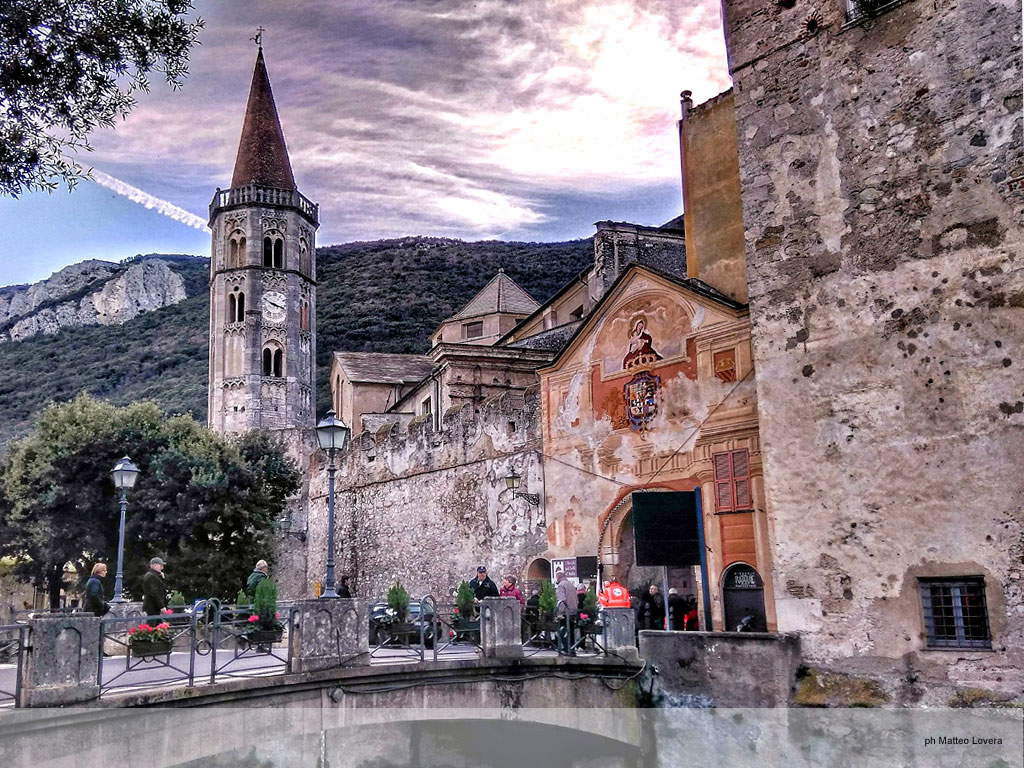 |
| The entrance to Finalborgo |
8. Brugnato
The town of Brugnato was born near a monastery founded in the area by the Columbian monks of Bobbio, and for centuries the town’s importance was linked precisely to the religious site, so much so that even today it is a diocesan seat (along with La Spezia and Sarzana). However, it was also an important transit center in the Val di Vara, so much so that in the Middle Ages it was disputed by the main feudal lords of the area, the Malaspina and the Fieschi (it was first the Fieschi, then the Malaspina, then the Fregoso, then the Malaspina again, and in 1530 the town was finally annexed to the republic of Genoa). Worth seeing in the town are the Co-cathedral of St. Peter, Lawrence and Columbanus (the former abbey church of the Columban monks), which still preserves its Romanesque interior intact (in spite of the facade redone in recent times). The bishop’s palace is home to the Diocesan Museum of Brugnato, and also in Brugnato is the Museo Civico Mineralogico, which houses the rich collection of minerals that belonged to engineer Ambrogio Del Caldo, with materials from all over the world. Also visible near the town are the remains of the ancient medieval bridge over the Vara.
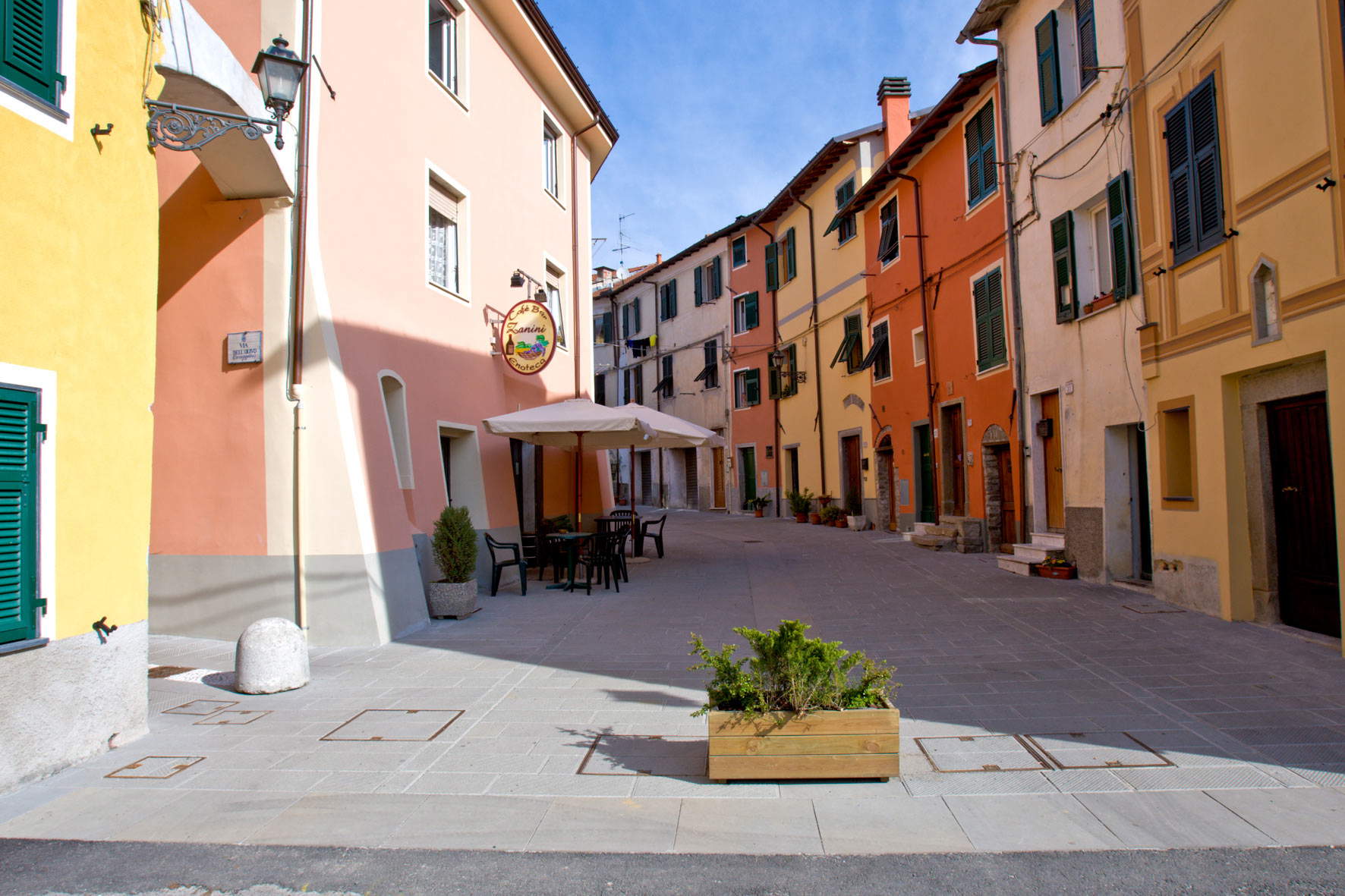 |
| Street in the center of Brugnato |
9. Triora
A small town of just over three hundred inhabitants in the province of Imperia, it owes its fame to witches: in the 16th century, in fact, Triora was the site of numerous witchcraft trials (the documents of which are still preserved in the State Archives of Genoa): the trial held between 1587 and 1589 is considered one of the largest and most important of the 16th century. Dedicated to this particular story is the Regional Ethnographic and Witchcraft Museum, which not only recounts the village’s customs and traditions but also delves into the relationship between Triora and witchcraft. The village still retains its medieval appearance, although several buildings have been remodeled over the centuries. These include the neoclassical collegiate church of Our Lady of the Assumption, inside which is an important gold background by Taddeo di Bartolo depicting the Baptism of Christ, a work from 1397, signed and dated.
 |
| Road of the center of Brugnato |
10. Moneglia
A center of very ancient origins, it is already mentioned in Roman times and had some importance even during the Middle Ages, when it was a Genoese fiefdom. For art lovers, Moneglia is famous as the birthplace of Liguria’s greatest 16th-century painter, Luca Cambiaso: his works are preserved in the parish church of Santa Croce. Among the oldest signs is the fortress of Monleone, built in the 12th century by the Genoese, which overlooks the town.
 |
| View of Moneglia. Ph. Credit Tatiana Yalovaya |
 |
| Ten villages to visit in Liguria |
Warning: the translation into English of the original Italian article was created using automatic tools. We undertake to review all articles, but we do not guarantee the total absence of inaccuracies in the translation due to the program. You can find the original by clicking on the ITA button. If you find any mistake,please contact us.